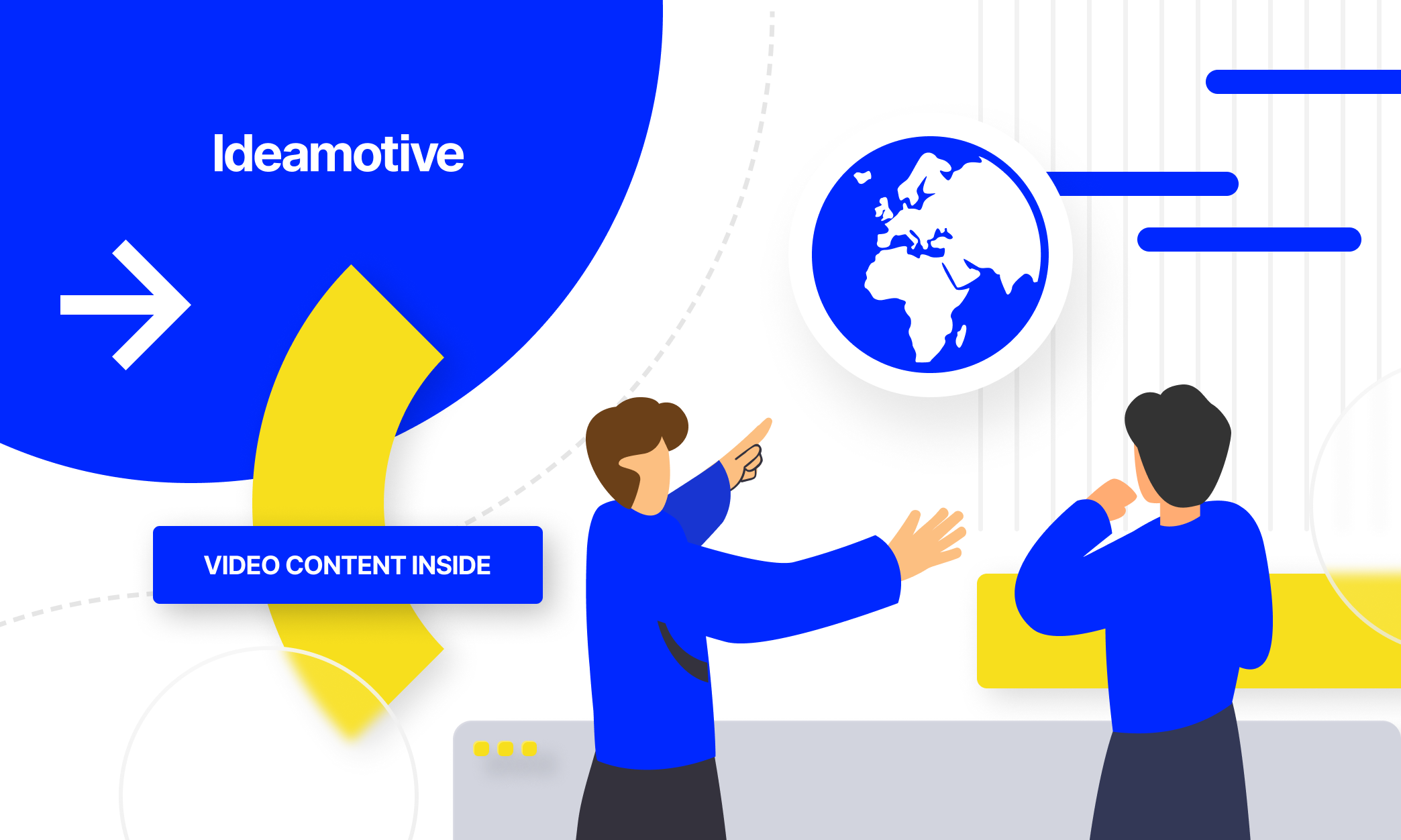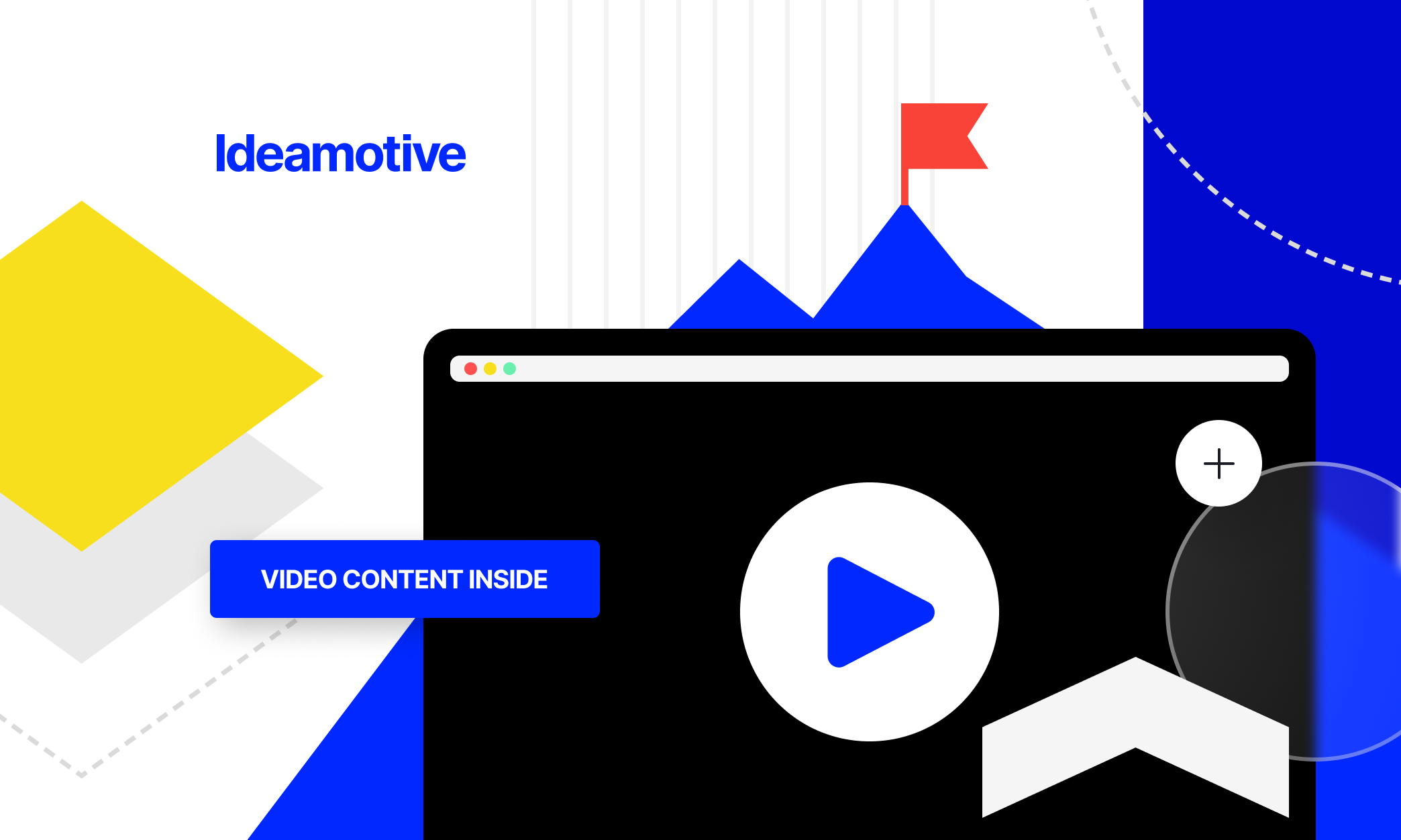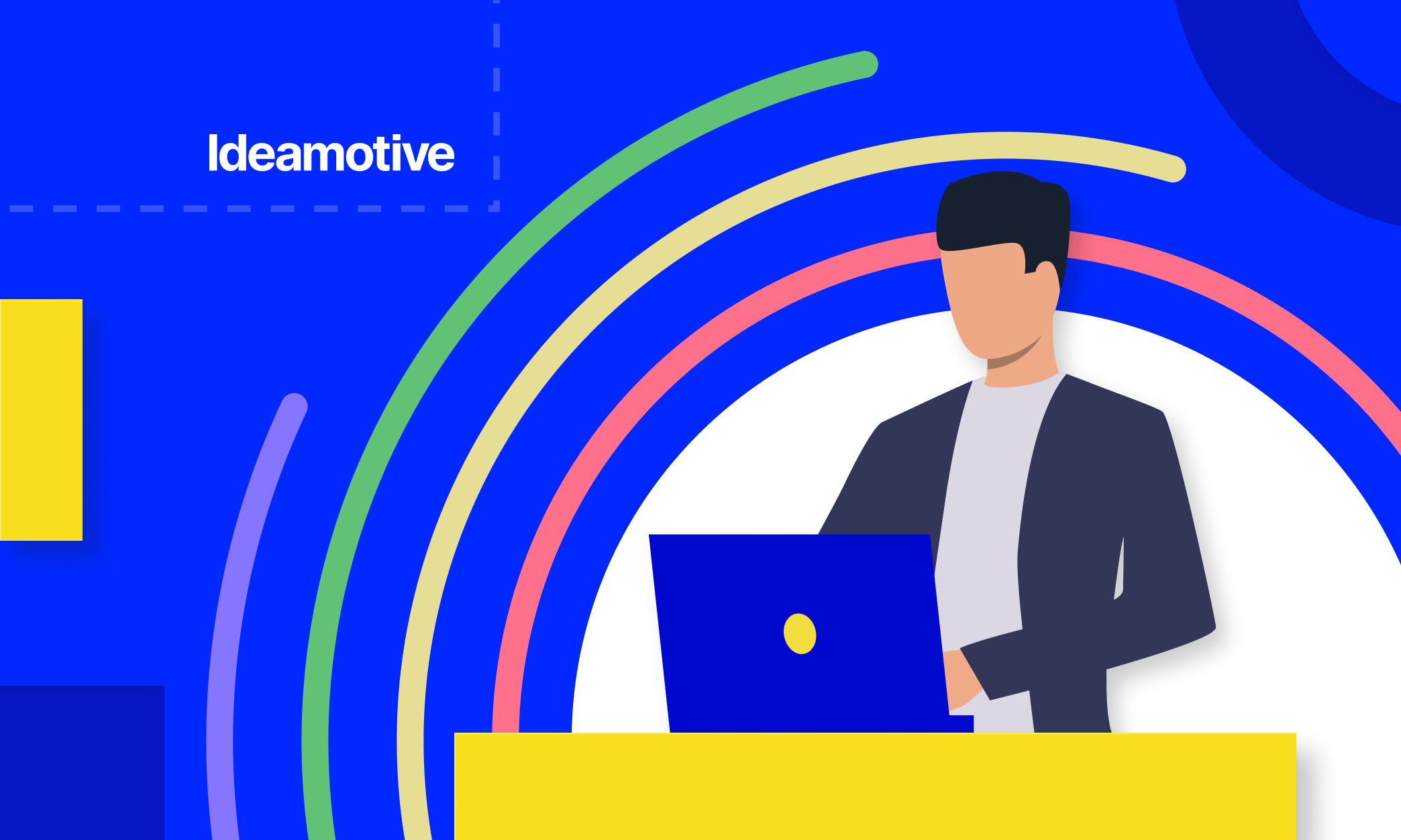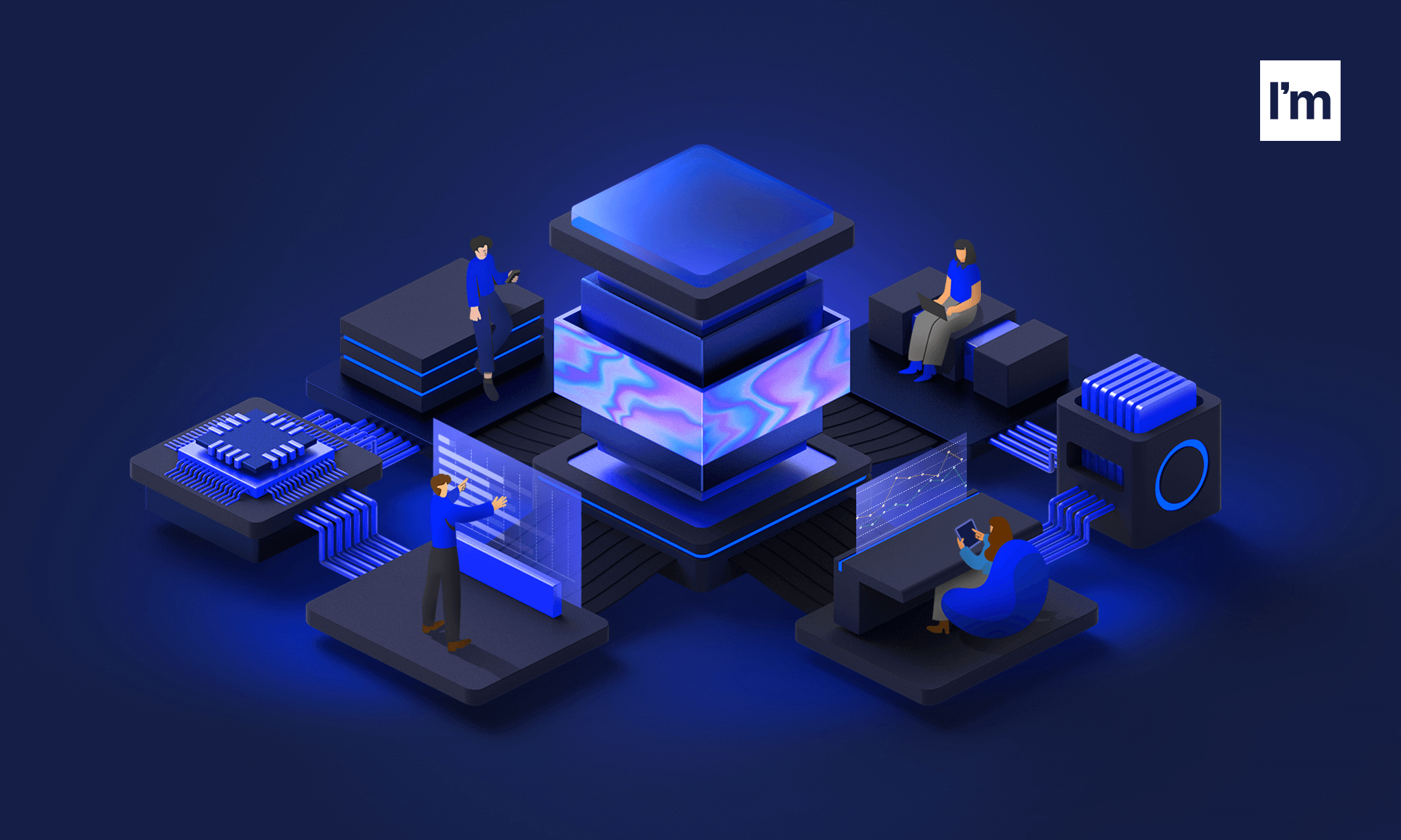Founder's Guide To Software Product Development Life Cycle
Mar 3, 202211 min read

Robert Krajewski
Co-founder and CEO of Ideamotive. Entrepreneur, mentor and startup advisor.
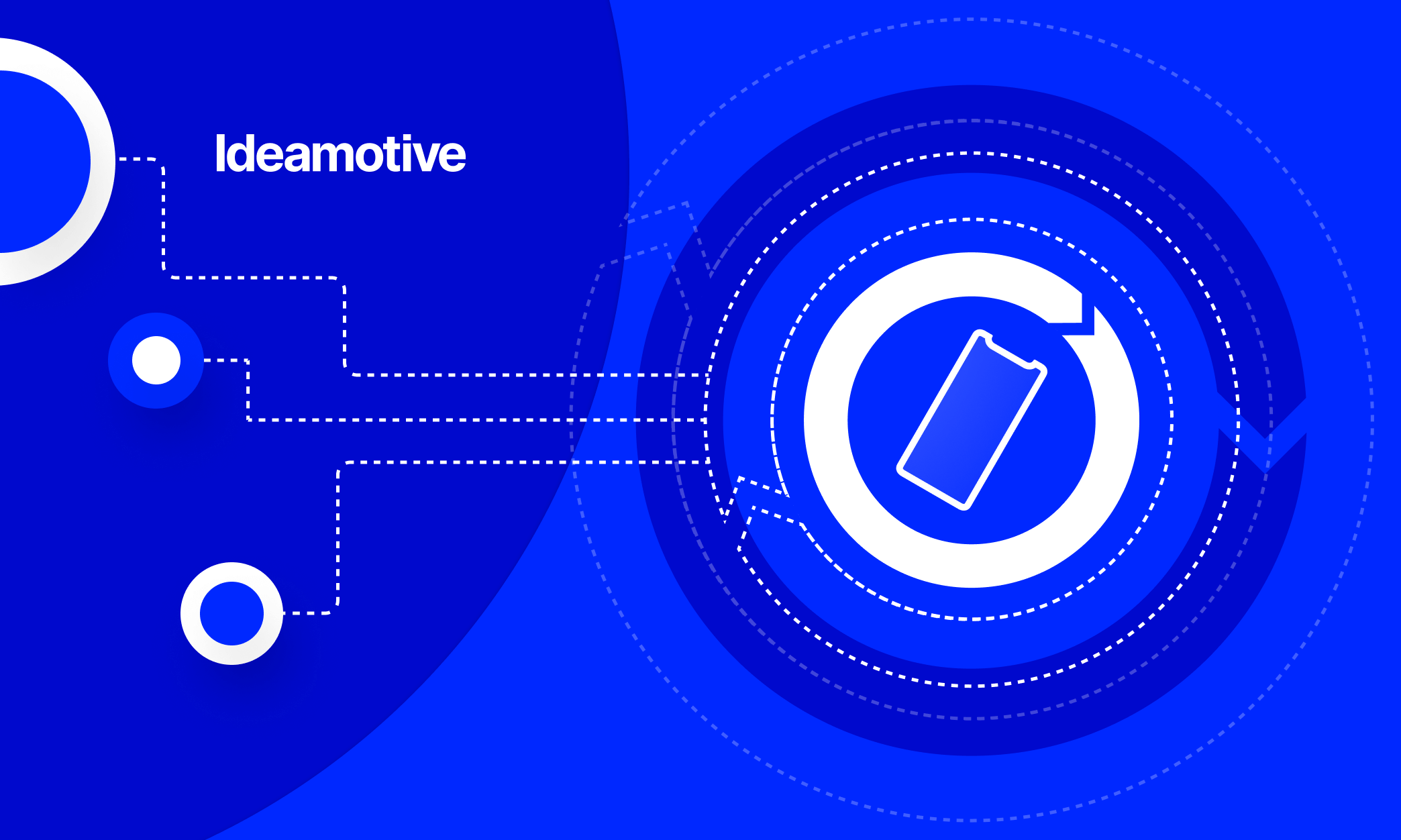
Behind all the conveniences that we use in everyday life, there is complex software. Take, for example, self-driving cars, smart homes, or augmented reality capabilities built into eyewear. All of these things are managed by complex software working behind the scenes.
However, no matter how complex the software is, it must be flexible, easy to maintain, and extensible. How do software developers achieve this? The answer lies in carefully planning each step of the software product development life cycle.
The outline of the software development process is an excellent starting point in software product building. In this article, we will discuss the concept of the software product development life cycle, its phases, and the general methodologies used in it.
What is the software product development life cycle?
The Software Development Life Cycle (SDLC) is a series of steps that a software development team must follow to develop and maintain software.
The software product development life cycle begins with the decision to create software and ends with the retirement of that software. The software development process includes 6 key steps. Each of them contains several stages. In essence, SDLC is a roadmap for developing software products.
Origins of the software product development life cycle
SDLC began as a "systems development life cycle" in the 1960s. As Jeffrey Elliott explains in his book Global Information Technology for Business. Business strategists from large corporations developed this model to help manage complex business systems that require a lot of data processing and analysis.
Over time, variations of the framework have been adopted to develop hardware and software technology products and other complex projects.
Why is SDLC important?
From missed deadlines to hasty decisions and futile attempts to get a project under control, poorly planned software projects tend to spiral out of control. On the contrary, by having an intended software delivery lifecycle, businesses can enjoy predictable software product development. For software developers, this means understanding what they are doing now and what will happen next.
Here are some key benefits of the product development life cycle in software:
- This provides transparency to parties involved in software development;
- This allows business owners to retain control of the project;
- It provides predictability of results throughout the software development process;
- This minimizes risk, such as going over budget or deadlines;
- This ensures that the software development process continues until all expectations are met.
As such, all projects must have an intended software product development life cycle because that is the only way to ensure that the resulting software will meet the requirements of both business owners and end-users.
How SDLC works
SDLC reduces the cost of software development while improving quality and reducing production time. The SDLC achieves these apparently divergent goals by following a plan that eliminates the typical pitfalls of software development projects. This plan begins with an assessment of existing systems for deficiencies.
It then determines the requirements of the new system. Then builds the software through the analysis, planning, design, development, testing, and deployment phases. By anticipating costly mistakes, such as lack of feedback from the end-user or customer, SLDC can eliminate unnecessary rework and after-the-fact fixes.
It is also important to know that a lot of attention is paid to the testing phase. Since SDLC is an iterative methodology, you must ensure the quality of the code in every cycle. Many organizations tend to spend little effort on testing, while a stronger focus on testing can save them a lot of rework, time, and money. Be smart and write the right types of tests.
Founders of the product should be sure that their C-level is aware of these features. If not, make sure to find and hire the best CTO for your startup.
Phases of the software product development life cycle
Several versions of the software development lifecycle have emerged. Guru99, for example, uses a seven-stage SDLC structure that separates requirements gathering and a feasibility study into two distinct stages. Other organizations, such as the Software Testing Help, combine these two steps into one phase: "requirements gathering and analysis".
We have considered many variants of software development life cycle models. The following six-step structure seems to provide the smoothest and most efficient way.
I. Research and planning
Purpose: Gather and document business requirements
At this stage, all the necessary information is collected from the client in order to develop the product in accordance with their expectations. Any ambiguities should only be resolved at this stage.
Business analysts and project manager schedule a meeting with the founder to gather all the information, such as what the client wants to build, who the end-user will be, what the purpose of the product is. Before creating a product, it is very important to get a basic understanding or knowledge of the product.
For example, the founder wants to have an application that includes money transactions. In this case, the requirements should be clear, such as what transactions will be done, how they will be done, what currency they will be done in, etc.
After the requirements are collected, an analysis is carried out to verify the feasibility of developing the product. In case of any ambiguities, a call is set for further discussion.
Other possible issues to be discussed are as follows:
- Top 3 problems your new product idea could solve
- Size and accessibility of possible markets
- Direct and indirect competitors
- Initial pricing model (test it)
- Initial product roadmap and a basic budget for MVP development
Once the requirements are clearly understood, an SRS (Software Requirements Specification) document is created. This document must be fully understood by the developers and must also be reviewed by the founder/C-level for further reference.
Please check out our Digital Product Development: Step-By-Step Guide for more insights.
II. Design and prototyping
Purpose: UX-UI designers translate the requirements of software development into the design
The design phase is a necessary precursor to the main development phase.
Developers first outline the details of the entire application, as well as specific aspects such as:
- User interfaces
- System interfaces
- Network and network requirements
- Database
They usually turn the SRS document they create into a more logical structure that can then be implemented in a programming language. Operations, training, and maintenance plans will be put in place to ensure developers know what they need to do at each stage of the cycle going forward.
Once completed, development managers prepare a design document that will be referenced in the next phases of the SDLC.
With a prototype or minimum viable product (MVP), you can put your preliminary research into practice and see if your ideas work in real life. Both options are intended for testing so that you can customize your project flexibly and use resources sparingly.
III. Software development
Purpose: To create the actual software
Software development is the most time-consuming phase of the software product development life cycle, but it is more predictable than the design phase.
Using design documentation, software developers write code for components. Tasks are distributed among team members according to their area of specialization. The developers of the client software are responsible for creating the interface and its interaction with the server. DBAs add the required data to the database.
In theory, all the pre-planning and sketching should make the actual development phase relatively easy.
Developers follow any coding guidelines defined by the organization and use various tools such as compilers, debuggers, and interpreters.
Depending on the chosen programming language your Ruby on Rails/
React Native/React developers select the correct code to use based on the specifications and requirements of the project.
The result of this stage is a working software product and a source code document.
IV. Testing
Purpose: To ensure that the software meets the requirements
After the development team completes the programming of the software, it's time for the quality assurance (QA) team to step in. The QA team tests the software to measure its quality. At this stage, the software goes through various types of tests:
- Functional testing: checking that the software meets the requirements described in the Software Requirements Specification;
- Performance testing: it is aimed at determining how the software works under load (its speed, responsiveness, and stability);
- Unit testing: testing each component individually. If there is a flaw in any of them, the software developers responsible for it must go back and fix it.
- Security testing: as the name suggests, this type of testing aims to verify the security of the system;
- Usability testing: this type of testing involves testing the components that the user encounters to determine if the software is intuitive, easy to use, and understandable to users.
The software developers fix any bugs that occur during this phase and then the QA team tests the software or its components again. Quality assurance is an ongoing process that continues until the software is completely bug-free and meets requirements.
V. Deployment
Purpose: To deliver finished software to users
When pre-testing proves that the software is ready for further work, it is transferred to production. This step involves coordinating the release of the software product to deliver your solution to end-users in a well-coordinated manner.
Take a look at what orchestration of a release includes:
Server setup
The first thing you need to do to get your software working is to prepare a place to host it. Whether you choose local servers or a cloud platform, you leave it up to your development team.
Building a CI/CD pipeline
Whatever you develop, you want to connect your software to the Continuous Integration (CI) and Continuous Delivery (CD) pipeline. Once implemented, it speeds up the process of releasing all the builds you have and makes it easier to accept changes after launch. In addition, CI/CD pipeline best practices enhance the maintainability of your product by encapsulating it in a single package.
Protecting the software from third-party failures
No software is immune from all risks. Third-party integrations - and even your cloud service provider - can sometimes run into trouble, exposing your system to failures. This is why your development team should set up server backup during the implementation phase.
Preparing and implementing a deployment plan
Release orchestration also revolves around the deployment plan. It is placed at the end of the development process to determine how your software should be run, who is responsible for releasing it, and how it should be maintained thereafter.
VI. Maintenance and operations
So, your product is released. This marks the start of operations and routine maintenance.
Even though it happens last, maintenance is one of the most important phases of software development. You must maintain—or hire someone to maintain—your product in order to improve, update, and keep it running without downtime.
This is when you usually sign a software maintenance agreement with your development team or a third party. Under this agreement, you specify which parts of your product should be supported, maintenance activities, obligations, and more.
According to the IEEE/ISO/IEC 14764-2006 standard, there are four types of maintenance work:
- Corrective maintenance of software. If someone notices a bug in your product, fixing it is part of corrective maintenance. This refers to the actions taken in response to discovered flaws in your software.
- Preventive software maintenance. Just like you change your car's engine oil to prevent problems with a set of wheels, this type of service includes timely checks and fixes to avoid software bugs.
- Flawless software maintenance. Once deployed, your software needs to evolve. Perfect service means optimizing, refining, and adding new features to provide the best version of your product to end-users.
- Adaptive software maintenance. Are you moving to the cloud? Responding to updated policies in third-party add-ons your software uses? This type of service entails whatever needs to be done to adapt your product to change without impacting its value to your target audience.
Models & methodologies
A software product life cycle model is a descriptive representation of the software development cycle.
Attention! SDLC models may take a different approach, but the basic steps and activities remain the same for all models.
Waterfall model
The waterfall model is the oldest of all SDLC methodologies. It is linear and simple and requires development teams to fully complete one phase of the project before moving on to the next.
Each stage has a separate project plan and takes information from the previous stage to avoid similar problems (if they arise). However, it is vulnerable to early delays and can lead to big problems for development teams in the future.
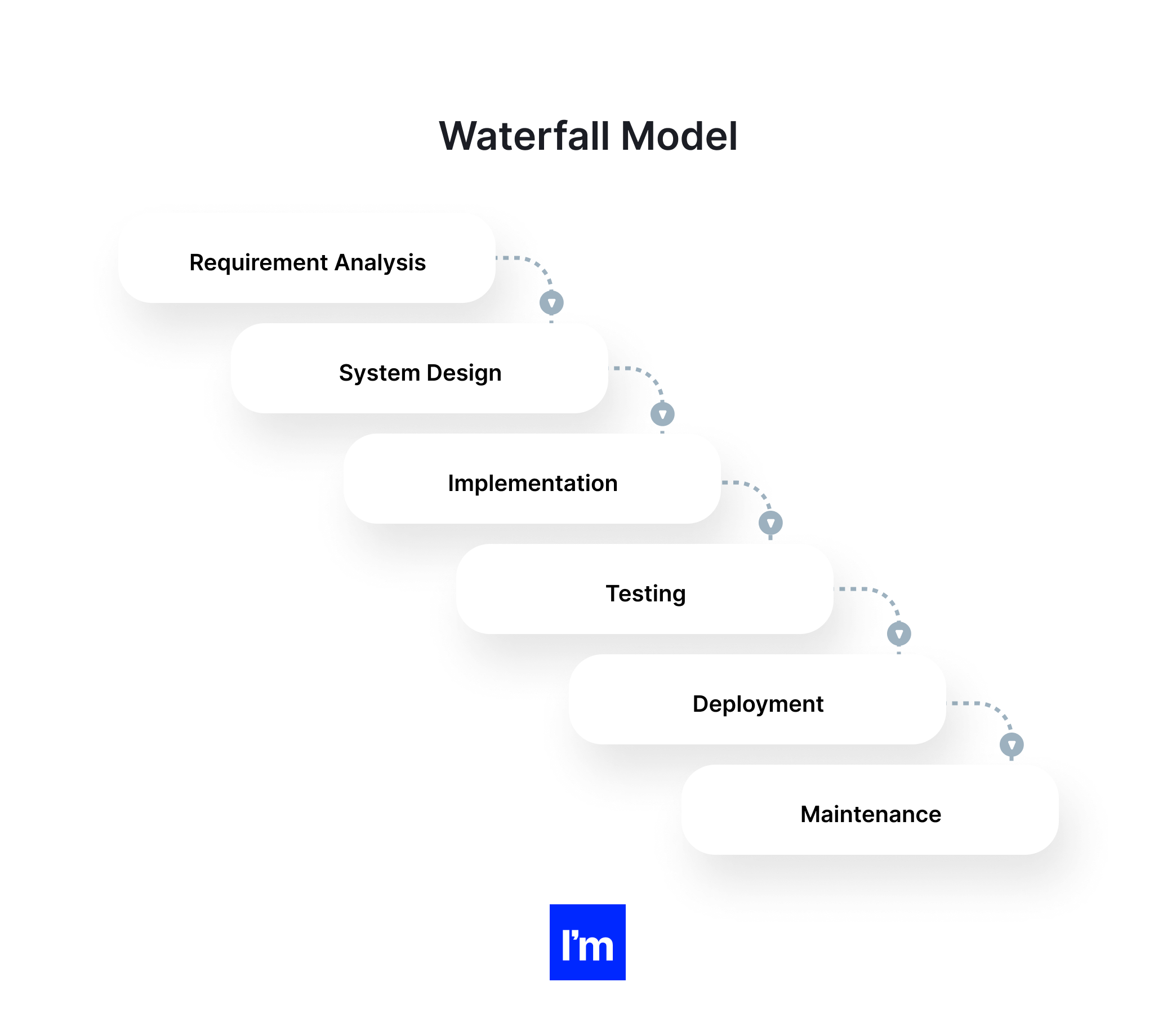
Advantages of the waterfall model
- The waterfall model is a simple model that is easy to understand and in which all steps are performed step by step.
- The results of each stage are clearly defined, which does not lead to complexity and makes the project easy to manage.
Disadvantages of the waterfall model
- The waterfall model is time-consuming and cannot be used for short-term projects because in this model a new stage cannot be started until the current stage is completed.
- The waterfall model cannot be used for projects with vague requirements or in which requirements are constantly changing, because this model assumes that the requirements will be clear at the very stage of collecting and analyzing the requirements, and any changes at a later stage will lead to an increase in costs since changes will be required at all stages.
V-shaped/V- model
The V-model (short for Verification and Validation) is very similar to the waterfall model. A testing phase is included in every stage of development to identify potential bugs and defects.
It is incredibly disciplined and requires strict time limits. But in theory, it highlights the shortcomings of the basic waterfall model, preventing larger bugs from getting out of control.
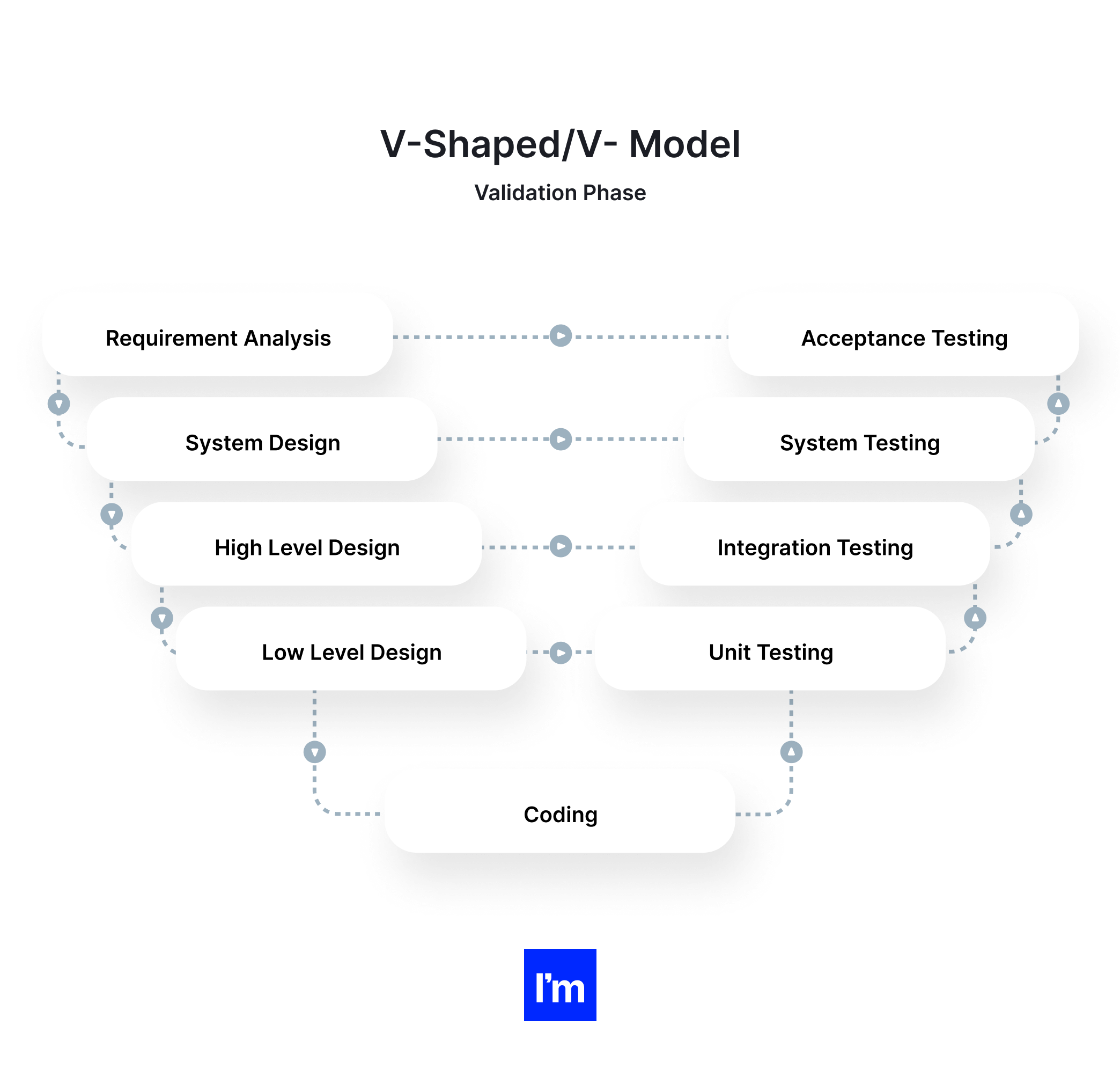
Advantages of the V-model
- This is a simple and clear model.
- The V-model approach is good for smaller projects where a requirement is identified and frozen early.
- It is a systematic and disciplined model that results in a high-quality product.
Disadvantages of the V-model
- The V-shaped model is not suitable for current projects.
- Changing the requirements at a later stage would be too costly.
Prototype model
The prototype model is a model in which a prototype is developed before the actual software.
Prototype models have limited functionality and inefficient performance compared to real software. Dummy functions are used to create prototypes. It is a valuable mechanism for understanding customer needs.
Software prototypes are created before the actual software in order to get valuable feedback from the client. Feedback is implemented and the customer checks the prototype again for changes. This process continues until the model is accepted by the customer.
After collecting the requirements, a quick design is created and a prototype is created, which is presented to the customer for evaluation.
Customer feedback and revised requirements are used to modify the prototype and are again presented to the customer for evaluation. Once the client approves the prototype, it is used as a requirement to build the actual software. The actual software is built using the Waterfall model approach.
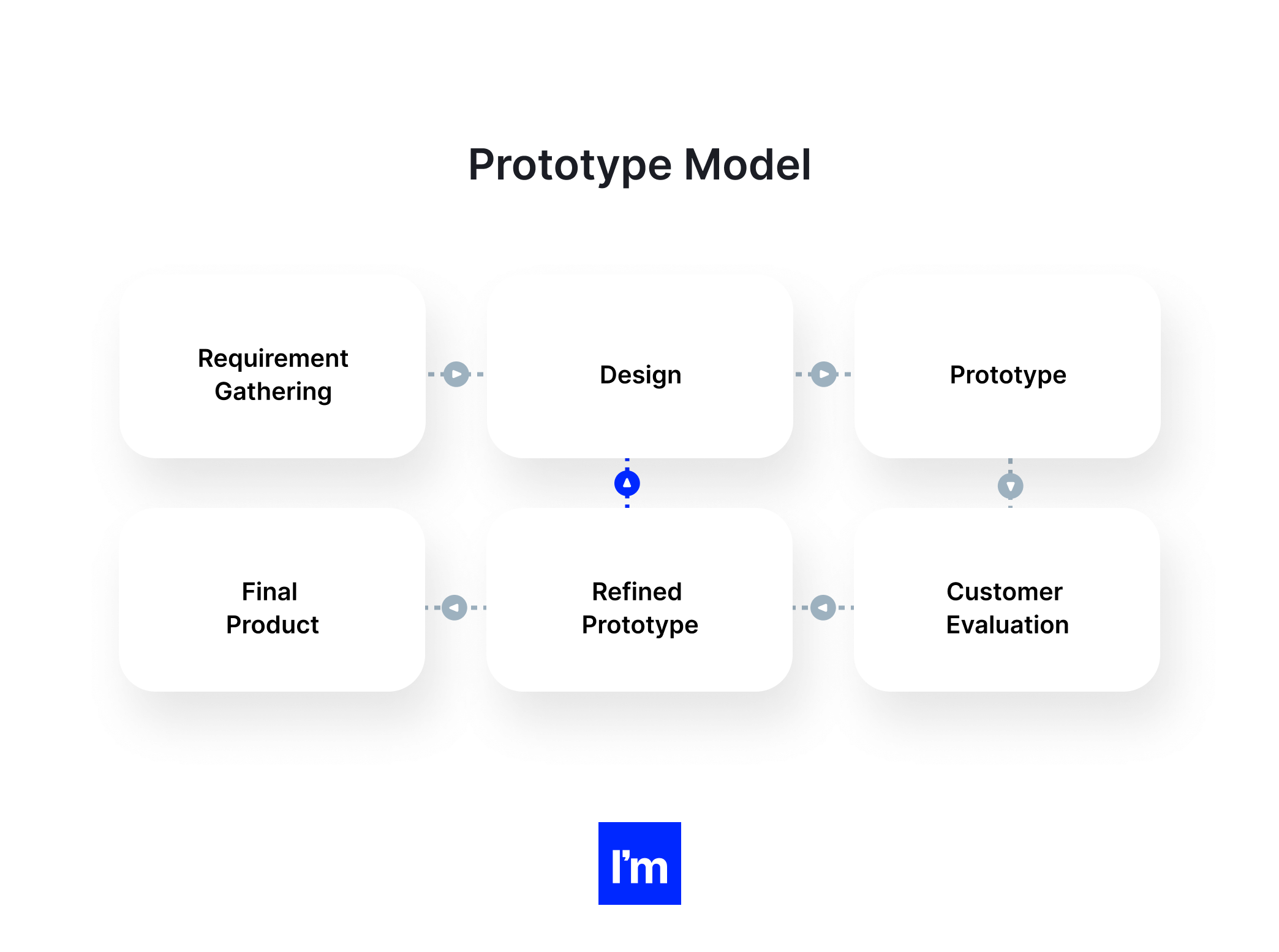
Advantages of the prototype model
- The prototype model reduces development cost and time, as defects are detected much earlier.
- A missing feature or functionality or a change in requirements may be identified during the evaluation phase and may be implemented in an improved prototype.
- Involving the customer from the outset reduces confusion about the requirements or understanding of any functionality.
Disadvantages of the prototype model
- Since the customer is involved in each phase, they may change the requirements for the final product, which will complicate the task and may increase the delivery time of the product.
Spiral model
The spiral model includes an iterative and prototyping approach.
In iterations, the phases of the spiral model are observed. The cycles in the model represent a step in the SDLC process, i.e. the innermost cycle is requirements gathering and analysis, followed by planning, risk analysis, development, and evaluation. The next cycle is design followed by implementation and then testing.
The spiral model consists of four phases:
- Planning
- Risk analysis
- Engineering
- Evaluation
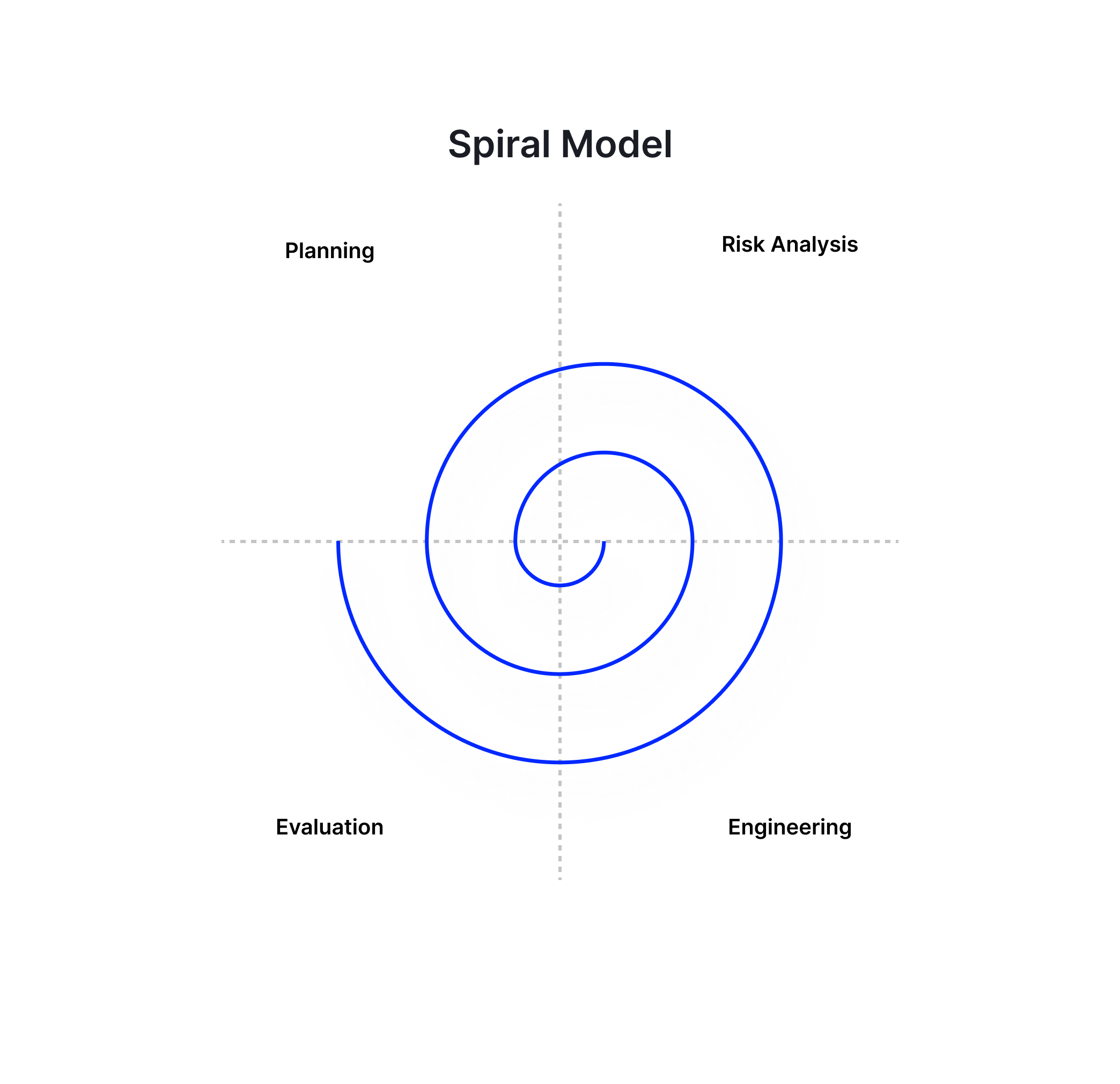
Advantages of the spiral model
- Risk analysis is widely carried out using prototype models.
- Any improvement or change in functionality can be made in the next iteration.
Disadvantages of the spiral model
- Funding consultants suggest applying it only to large projects.
- The cost can be high, as a large number of iterations may be required, which can lead to a long time to get the final product.
Iterative model
The iterative model divides the product into small chunks.
For example, a feature that needs to be developed in an iteration is solved and implemented. Each iteration goes through phases, namely requirements analysis, design, coding, and testing. Detailed planning in iterations is not required.
After the iteration is completed, the product is tested and delivered to the customer for evaluation and feedback. Customer feedback is implemented in the next iteration along with the newly added feature.
Hence, the product increases in terms of features, and after the iterations are completed, the final build retains all the features of the product.
Phases of the iterative development model:
- Inception phase
- Elaboration Phase
- Construction Phase
- Transition Phase
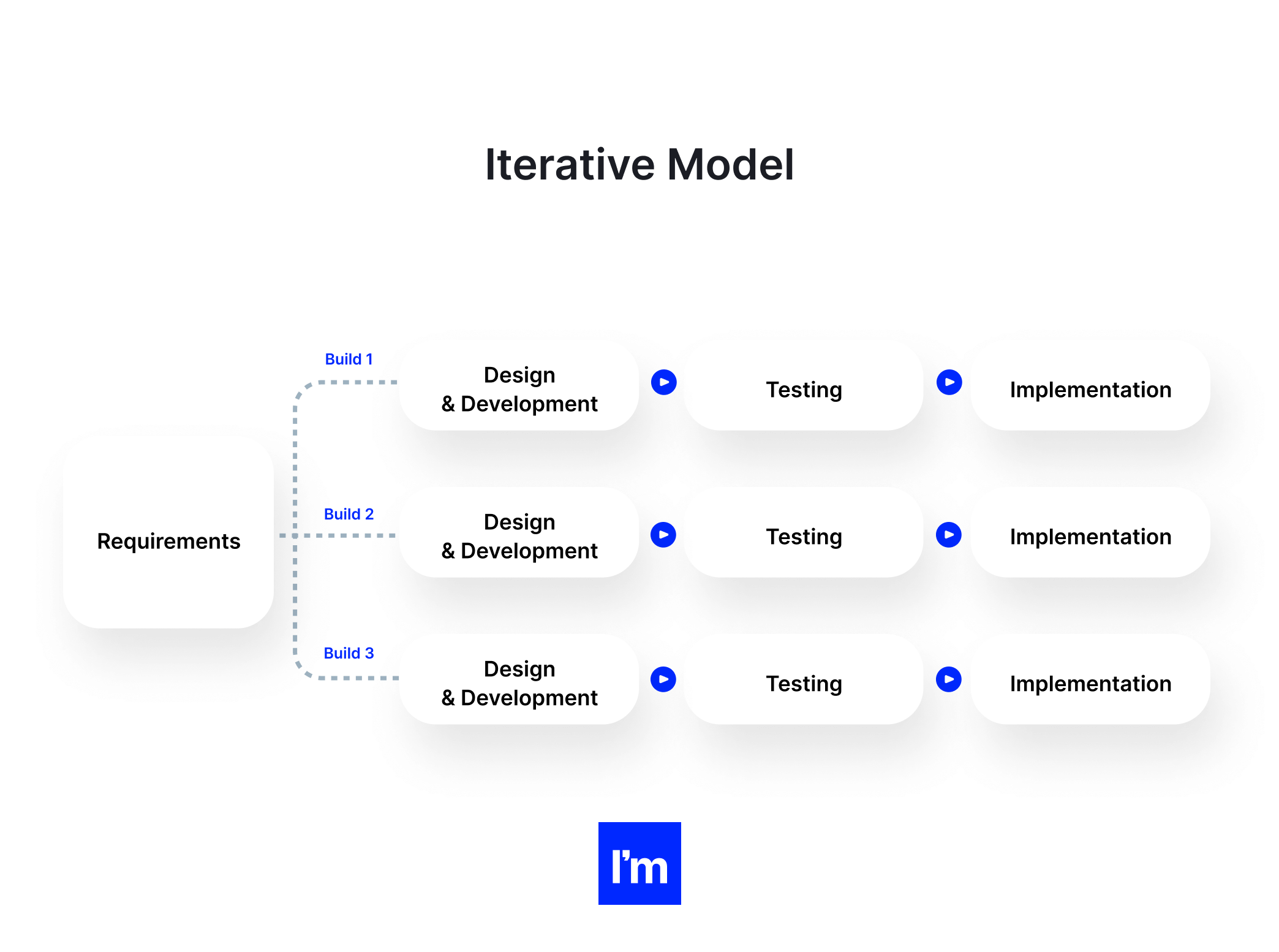
Advantages of the iterative model
- Any change to a requirement can be easily implemented and at no additional cost since there is a possibility that the new requirement will be included in the next iteration.
- Risk is analyzed and identified in iterations.
- Defects are detected at an early stage.
- Since the product is divided into smaller pieces, it is easy to manage.
Disadvantages of the iterative model
- A complete requirement and understanding of the product are necessary for gradual destruction and creation.
Big bang model
The Big Bang model does not have a defined process. Money and effort come together when the input and output are designed products that may or may not be the same as what the client needs.
The Big Bang model does not require much planning. The developer performs the requirements analysis and coding and develops the product according to their understanding. This model is only used for small projects. There is no testing team and there is no formal testing, and this can cause the project to fail.
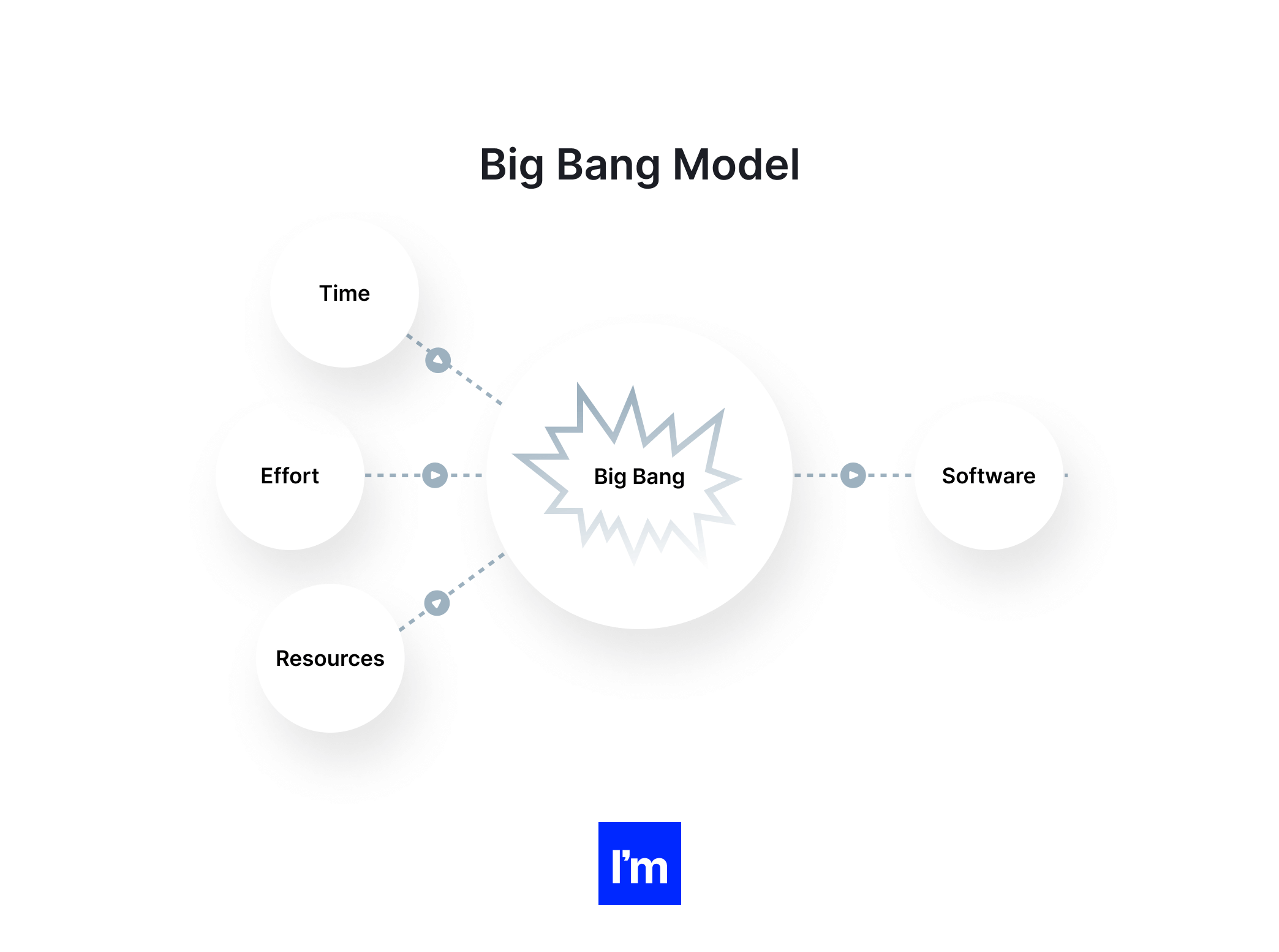
Advantages of the big bang model
- This is a very simple model.
- Less planning is required.
- The developer has the ability to create their own software.
Disadvantages of the big bang model
- The big bang model cannot be used for large, current, and complex projects.
- High risk and uncertainty.
Agile model
The Agile model is the one that focuses more on product development flexibility than requirements.
In Agile, a product is broken down into small, step-by-step builds. It is not developed as a finished product in one go. Each build increases in terms of features. The next build is built on the previous functionality.
Here, iterations are called sprints. Each sprint lasts 2-4 weeks. At the end of each sprint, the product owner reviews the product, and once approved, it is delivered to the customer.
Customer feedback is taken for improvement. Suggestions and improvements are processed in the next sprint. Testing is done in every sprint to minimize the risk of any failures.
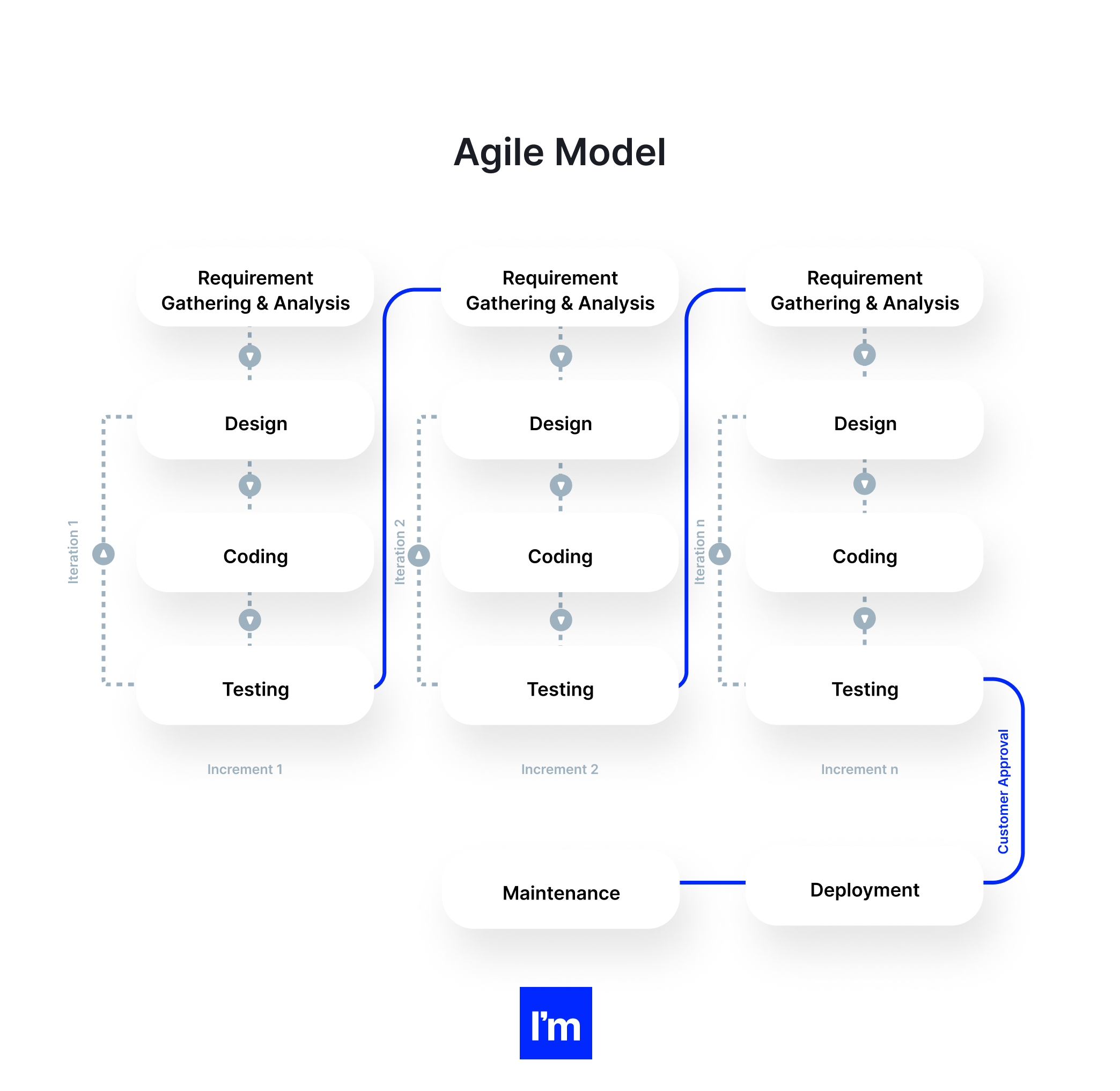
Advantages of the Agile model
- This model software life cycle allows for more flexibility in adapting to change.
- A new feature can be easily added.
- Customer satisfaction, as feedback and suggestions are accepted at every stage.
Disadvantages of the Agile model
- Lack of documentation.
- Agile needs experienced and highly skilled resources.
- If the client does not understand exactly how they want to see the product, the project fails.
Conclusion
The software product development life cycle is a vast, multi-step process that begins when your idea is born and continues as it matures into a complete solution. To complete all these steps, you need to make a lot of effort. But this is easier to do if they are carved in stone, as in this guide.
The six stages of software development take your product from preliminary research to deployment and maintenance. Stick to them so you don't lose your way, whether you're building a web app or a mobile app.
We at Ideamotive provide a streamlined product development process that simplifies both deployment and migration.
Take advantage of the top-notch nearshore software development.

Robert is a co-founder of Ideamotive. Entrepreneur, who with passion spreads digital revolution all around the internet. Mentor and advisor at startup accelerators. Loves to learn and discover new business models.
View all author posts
Trending articles
21 Dazzling Examples of Mobile App UI Design to Inspire You in 2023
Michał Pruciak 7 min read
MedTech vs HealthTech vs BioTech: What Are The Differences?
Michał Pruciak 7 min read
10 Business Applications of Neural Network (With Examples!)
Michał Pruciak 4 min read
10 Irresistible Examples of Web Design Best Practices for 2023
Adam Kozłowski 7 min read
21 Amazing Examples Of React Web Development
Michał Pruciak 14 min read

The State of Central & East Europe IT Outsourcing and Offshoring 2022 Report
Belarus • Poland • Romania • Ukraine
Read nowLooking for a specific type of business support service?
Looking for exceptional tech talent to join your team?
Our broad network of battle-tested software developers, designers, managers and business consultants is here for you.
Rated 4.8 / 5.0 by clients from various industries and locations.
